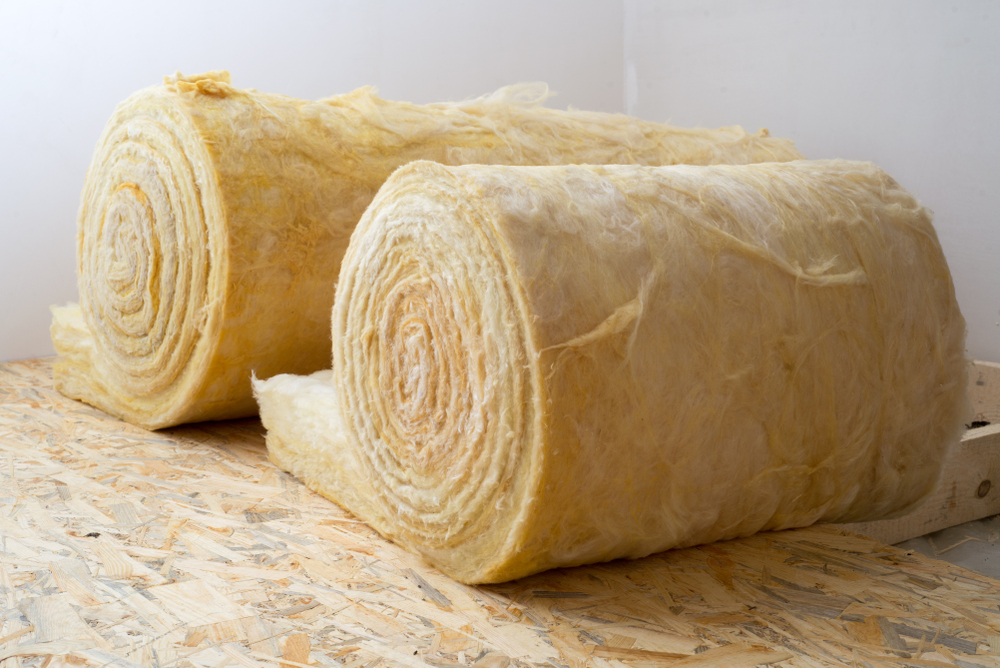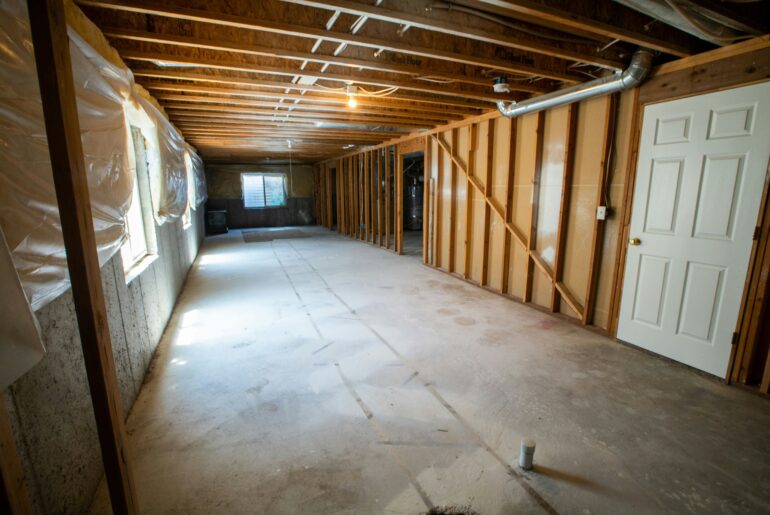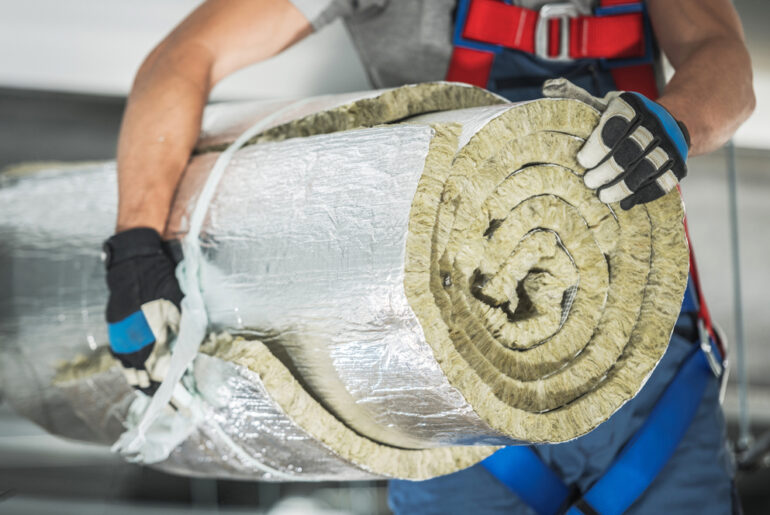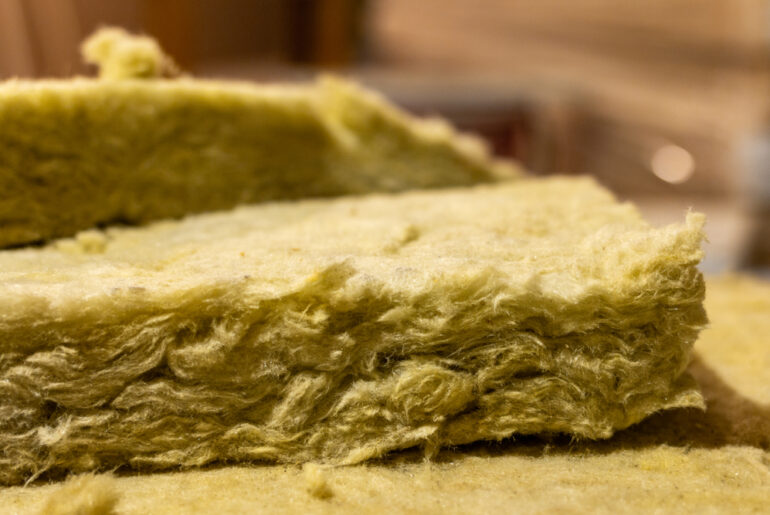Made of basalt rock and recycled slag materials, rockwool insulation has become popular for its fire-resistant and sound-absorbing properties. It is also resistant to rot, mold, bacterial growth, and mildew, which is its prime selling point.
Even better, the insulation material is resistant to rodents. Its R-value is also higher than fiberglass insulation.
But like most other insulation options, rockwool has its own set of problems. Most of these problems are not due to the material itself but the way it was installed or the application in which it was used.
We’ll look at a few of these issues below.
8 Common Rockwool Insulation Problems
Before we move further, you must be aware that rockwool insulation is blow-in insulation, which means it is installed by blowing the material into walls and attic spaces. We wanted to clear this beforehand because many problems arise due to improper installation. Let’s dive in.
1. Non-Adherence to Building Regulations
The first problem on our list is not limited to rockwool insulation but to all types of insulation. It is the failure to follow building codes and regulations while installing insulation.
Building codes are created for a reason, which is to ensure the safety and structural integrity of buildings. Failure to adhere to these codes can lead to serious problems in the future, such as mold growth, moisture issues, and even fire hazards.
In some cases, building codes may vary from state to state or city to city, so it’s essential to understand and follow the specific regulations in your area.
2. Dry Slumping
A dry slump affects most blown-in insulation materials. When ”blowing” an insulation material into a space, your aim is to fill the entire area evenly without any gaps or voids.
Blown-in insulation takes a while to settle, which means you have to give it a day or two to see the final results. Often, after settling, the material slumps.
As a result, a cold spot forms in the area where the slump has occurred. It then becomes the entry point for condensation, inviting mold and mildew growth.
3. Wet Slumping
Dry slumps may occur due to reasons like improper installation, poor quality materials, or incorrect ratio of air to insulation material.
However, the wet slump is a result of moisture entering the insulation during or after installation.
Water intrusion can occur due to various reasons, such as leaky pipes, roof leaks, or even excess humidity in the air. Like a dry slump, a wet slump also pushes the insulation material down, forming an insulated pocket exposed to moisture and other elements.
4. Health Risks
Whenever you install a fiber-based insulation material, there’s a health concern due to inhalation of the said fibers. The same is true for rockwool insulation, too.
During installation, if you inhale the fibers, they can irritate your airways, causing coughing and shortness of breath. These fibers also embed in your skin to cause itchiness, skin irritation, and rashes.
To avoid this problem, you should wear protective gear, including a dust mask and goggles, while installing any type of insulation material. It’s also important to seal off the area being insulated and keep it well-ventilated during and after installation.
Even better, hire a professional to do the job instead of making a DIY project out of rockwool insulation installation.
5. Sagging Ceilings
We’ve already mentioned that rockwool is made up of steel slag and molten rock. That means it’s quite dense. Now, the density has its pros. For one, rockwool insulation is a great sound barrier. But, it also has its cons.
One of those cons is the weight. Rockwool insulation is quite heavy, and over time, it can cause your ceilings to sag, especially if the ceiling is already weakened due to moisture or structural issues.
It’s also harder to install rockwool insulation in the ceilings in the first place. The heavier material requires more manpower since one or two people alone cannot handle it.
Due to this, the installation process also gets more expensive. The additional weight further increases the risk of injury or an accident.
The workaround to this would be to not use rockwool insulation in your ceilings. Opt for lighter alternatives like fiberglass or cellulose insulation instead.
In case you have already installed rockwool insulation and are experiencing sagging ceilings, it’s best to consult a professional for the next steps. They might suggest reinforcing the ceiling or replacing the insulation altogether.
6. Improper Insulation Removal
If the previous insulation was not removed properly, it can cause issues when installing rockwool insulation.
For one, if the previous insulation is still there and in bad condition, it can cause mold growth or attract pests, which will then damage the newly installed rockwool insulation. Similarly, if the previous insulation was not removed completely, there could be gaps or holes in the coverage, which will decrease the effectiveness of the new insulation.
These factors could reduce the efficiency of rockwool insulation, too.
7. Not Biodegradable
Today, we live in a world where more and more people are learning to make responsible and sustainable choices. One of these choices is selecting biodegradable building materials so that they don’t end up in landfills and harm the environment.
Unfortunately, rockwool insulation is not biodegradable. Even if you break it down into fibers, some plastics will stay. Currently, there’s an abundance of rockwool in landfills in many developed and developing countries.
According to most experts, rockwool insulation lasts for about 30 years before needing replacement. Some might say rockwool can last your building’s lifetime if properly installed and maintained. However, when it does reach the end of its lifespan, there isn’t a sustainable way to dispose of it.
8. Improper Installation
Last but not least, improper installation can also cause problems with rockwool insulation. If the insulation is not installed according to the manufacturer’s instructions, it might not provide the desired results.
Then, you might sit and wonder why your rockwool insulation isn’t soundproof while the one in your parent’s house won’t let a peep in. If that’s the case, you might need to call a professional to reinstall it.
Similarly, if there are gaps in the insulation or if it’s fitted loosely, it requires a professional’s attention. Don’t delay calling for help because improper installation can cause the insulation to sag or compress, decreasing its effectiveness. Plus, there’s always a risk of mold and pests.





